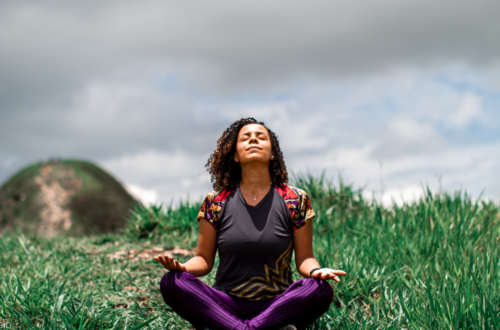
3 Types of Meditation; A Beginner’s Guide.
Meditation is an effective way of placing the mind into a state of restless alertness, which has numerous benefits for mental health.
In particular, meditation has been found to optimize brain function, including improving memory and concentration.
There are many different types of meditation, and each person might find one type more helpful than another.
If you are interested in learning about meditation and its potential benefits for your mental health, keep reading!
What Are the Top 3 Types of Meditation?
1) Zen Meditation

Zen meditation is a specific form of mindfulness meditation that has its origins in Buddhism. It originated in China and later spread to other parts of East Asia.
The goal of zen meditation is to achieve a zazen state, or complete stillness and concentration, and to discover the true nature of the reality we live in.
Zen, in essence, is the art of seeing into the nature of one’s own being by letting go.
How do you start practicing Zen Meditation?
- Find a quiet place to sit. Make sure it’s a place you can permanently use for meditation. You can even set up a small altar.
- Wear loose, comfortable clothing.
- Sit in a cross-legged posture ( Lotus Posture, half Lotus Posture, Quarter Lotus), a kneeling position, or in a chair.
- Keep your spine erect, and your head upright with your chin slightly tucked in.
- Close your eyes slightly (recommendation is to keep your eyes half-closed, cast downward at a 45-degree angle, so you are not staring at anything particular)
- Keep your mouth lightly closed.
- Place your hands in a cosmic mudra position (right hand on your lap, palm facing up, and the left hand’s back resting on the right hand’s palm, thumbs lightly touching)
- Make sure your position is comfortable so you can maintain stillness for the entirety of the meditation.
- Begin by witnessing your breath. Take a deep breath through your nose and exhale through your mouth.
- To start the meditation, begin by counting your breath every time you exhale.
- Start with 3-5 minutes and gradually increase your time.
- After meditation, do not get up too fast. Take your time.
2) Transcendental Meditation

Transcendental meditation, also known as TM, is a form of meditation that involves sitting quietly with your eyes closed and focusing on a mantra or a word or phrase repeatedly.
The goal of TM is to transcend, or go beyond, the busy thoughts that fill your mind and reach a state of pure consciousness.
To achieve this, you need to let go of all judgment and preconceived ideas about meditation.
Transcendental meditation has been shown in studies to be a highly effective way of reducing stress and promoting relaxation.
The main reason is that it drops the cortisol levels in your body, which are responsible for stress and anxiety.
Research shows that 20 minutes of transcendental meditation will result in a 30% drop in cortisol levels.
How to practice Transcendental Meditation:
- Find a quiet place you can use without distractions for at least 10-20 minutes.
- Sit comfortably in a chair or on the floor with your hands on your lap.
- Close your eyes. Take a deep breath through your nose and exhale through your mouth.
- Begin repeating the mantra. (There are plenty of resources you can find on the internet for choosing a mantra, find one that speaks to you.)
- Focus on the mantra and continue repeating it. If you find yourself distracted by thoughts, simply witness the thought and let it go. Do not give it any energy.
- Start with 5-10 minutes and gradually increase your time to 20 minutes.
3) Visualization Meditation

Visualization meditation is a type of meditation that involves creating mental images to achieve the desired outcome.
This image can be a calm, peaceful scene to help you relax or a vision you have for your future that you would like to manifest.
Visualizing and feeling the emotions that come with the image is thought to help you manifest the desired outcome faster.
When visualization meditation is practiced regularly, it can help reduce stress, increase clarity and focus, and improve overall well-being.
How to practice Visualization Meditation:
- Sit in a quiet place where you won’t be distracted.
- Close your eyes.
- Place your hands on your knees, facing up.
- Begin taking deep breaths through your nose and exhaling through your mouth.
- Visualize the image or scenario you desire.
- Place yourself in the image as if it is happening to you right now.
- Feel the emotions you will be feeling if you were in that scenario and were experiencing it.
- Spend 5-10 minutes visualizing and feeling the emotions related to the image.
- To come out of your visualization, simply take a deep breath, bring the image to a closure and open your eyes.
- Take a few minutes to reflect on the emotions you experienced.

It is essential to feel the emotions associated with your image.
Visualization meditation can be practiced for any amount of time. It is recommended to start with just a few minutes and gradually increase the amount of time you spend visualizing.
With visualization meditation, the sky is the limit-You can achieve anything you dream of!
To learn about the benefits of a 5-minute meditation click here.
Takeaway
There are many different types of meditation, and they all have one common goal, to improve mental and physical health. If you’re looking for a way to reduce stress, anxiety, or depression, or if you want to increase your focus and productivity, meditation may be the answer for you. If you’d like to give it a try, we encourage you to research more about the different types of meditation and find one that seems right for you and your lifestyle. Thank you for reading!
References
Youngs MA, Lee SE, Mireku MO, Sharma D, Kramer RSS. Mindfulness Meditation Improves Visual Short-Term Memory. Psychol Rep. 2021 Aug;124(4):1673-1686. doi: 10.1177/0033294120926670. Epub 2020 May 25. PMID: 32448056; PMCID: PMC8242403.
Behan C. The benefits of meditation and mindfulness practices during times of crisis such as COVID-19. Ir J Psychol Med. 2020 Dec;37(4):256-258. doi: 10.1017/ipm.2020.38. Epub 2020 May 14. PMID: 32406348; PMCID: PMC7287297.
Hartley L, Mavrodaris A, Flowers N, Ernst E, Rees K. WITHDRAWN: Transcendental meditation for the primary prevention of cardiovascular disease. Cochrane Database Syst Rev. 2017 Nov 15;11(11):CD010359. doi: 10.1002/14651858.CD010359.pub3. PMID: 29140556; PMCID: PMC6486000.




